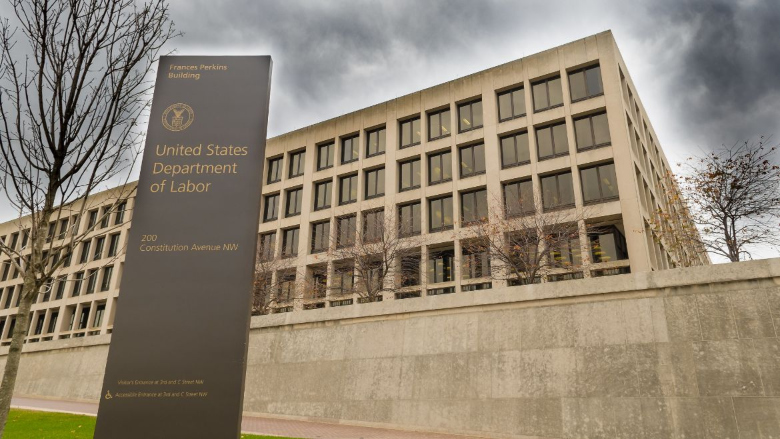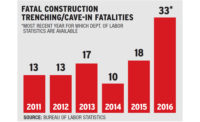The Dept. of Labor’s Occupational Safety and Health Administration is undertaking a nationwide effort to prevent falls in construction and all other industries. Falls are responsible for more worksite deaths than any other type of accident.
In announcing the National Emphasis Program on May 1, OSHA also said that fall-related violations are the kind most frequently cited in the agency's construction inspections.
OSHA points to Bureau of Labor Statistics data showing that falls from elevation caused 680 of the 5,190 fatal injuries in 2021 among all industries. That represents about 13% of all workplace deaths.
In outlining policies and procedures for the new program, OSHA states, "Considering that falls remain the leading cause of fatalities and serious injuries in all industries, the agency has determined that an increase in enforcement and outreach activities is warranted."
Doug Parker, DOL assistant secretary for occupational safety and health, said in a statement that the new program “aligns all of OSHA’s fall protection resources to combat one of the most preventable and significant causes of workplace fatalities.”
In its directive outlining the new program, the agency said, “OSHA anticipates that most of the inspections will occur in construction because the majority of the fatal falls to lower levels each year occur on construction worksites.”
Before initiating inspections under the new program, OSHA area and regional offices will be required to develop "a comprehensive fall protection awareness outreach program" for 90 days, OSHA said in its directive.
Chris Trahan Cain, director of safety and health for the North America's Building Trades Unions (NABTU), says that a key part of the new program is that it allows OSHA compliance and safety officers to open an inspection when they see a worker working "at height."
Prior to the launch of the fall protection program, an OSHA compliance officer couldn’t initiate an inspection “unless there was an imminent danger,” Cain said in an interview.
Joe Xavier, Associated Builders and Contractors senior director of health and safety, said that under the program, if a compliance officer determines that an inspection on a jobsite is not needed, the officer will provide a link, printed materials or carry out another outreach activity there.
NABTU's Cain says the building trades see the new program as a positive step. "We think it’s protective," she says. "We think that the Department of Labor is doing the right thing."
Cain also says that before the new program's launch, in nearly all OSHA regions there were regional or local fall-protection emphasis programs. But she says the new program might cover areas that previously "slipped through the cracks."
The program's national scope also could provide employers a "unified expectation" concerning "what OSHA can and can't do" concerning compliance officers' self-referral of an inspection, she says.
Cain, who also is executive director of the building trades' Center for Construction Research and Training, adds, "It's not new regulation. It's just a new approach on how OSHA will do inspections.”
ABC's Xavier said in comments emailed to ENR, "OSHA is utilizing all resources to combat fatalities caused by falls." He said that ABC encourages the national fall protection program's outreach, partnerships and alliances.
He said, "Fall protection is essential on construction jobsites as falls are a leading cause of injuries and they are completely preventable."
Parker noted that the announcement of the new program coincides with the 10th-annual National Safety Stand-Down to Prevent Falls in Construction as well as construction’s Safety Week.
The text of this article was updated 5/2/2023 with comments from the Associated Builders and Contractors.




Post a comment to this article
Report Abusive Comment